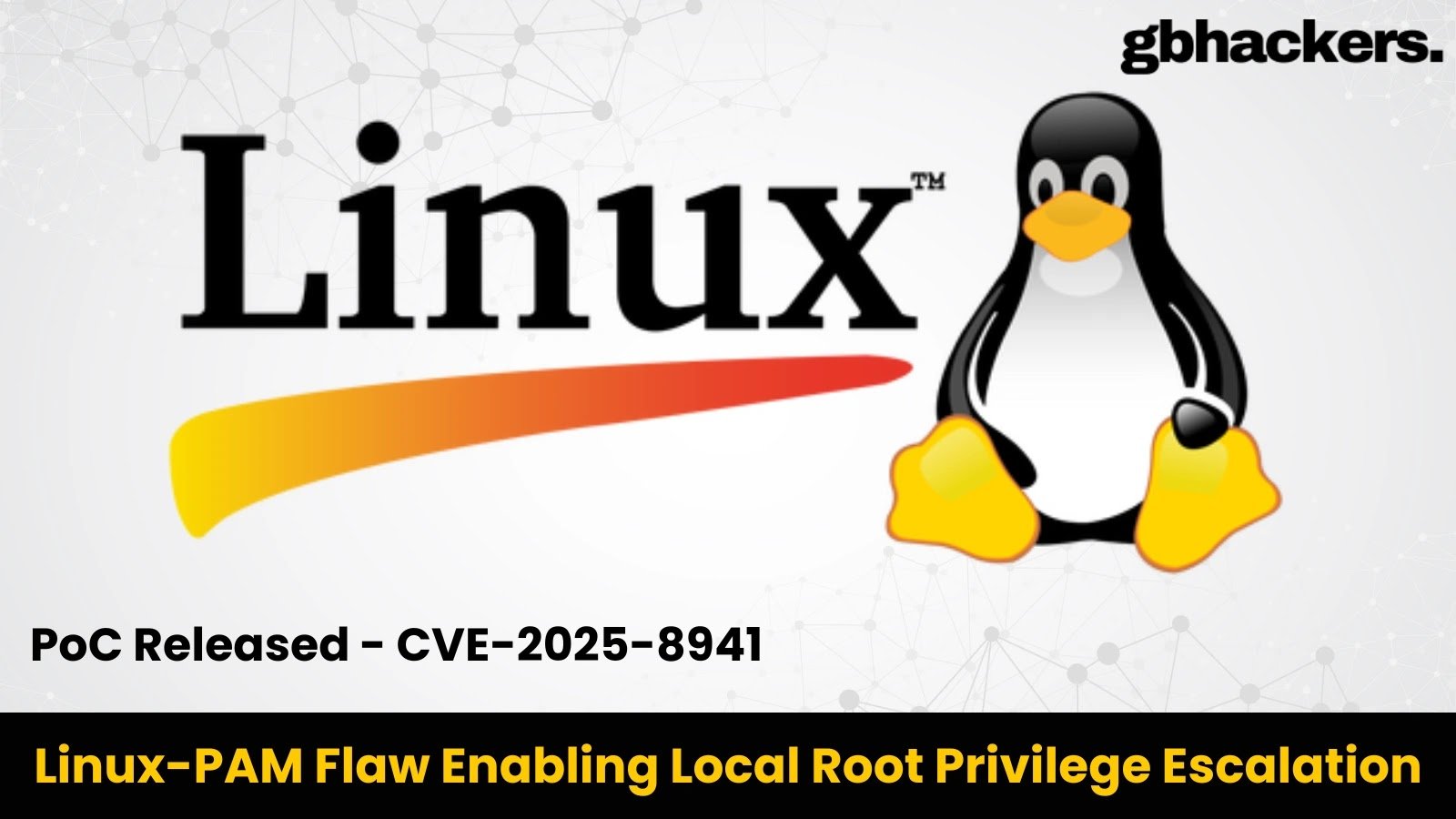A new proof-of-concept (PoC) has been released for a serious vulnerability tracked as CVE-2025-8941, affecting the Pluggable Authentication Modules (PAM) used across Linux distributions.
The flaw, rated 7.8 (High) on the CVSS scale, allows local attackers to elevate privileges to root through a sophisticated race condition and symbolic link (symlink) manipulation.
Discovered in the pam_namespace module of Linux-PAM, the issue stems from improper handling of user-controlled paths during namespace setup.
Under certain conditions, attackers with low privileges can create symlinks that redirect PAM’s directory creation process toward sensitive system locations.
When timed correctly, this redirection enables the creation or modification of files with root authority — effectively granting full system control.
- CVE ID: CVE-2025-8941
- Severity Level: High (CVSS 7.8)
- Attack Vector: Local, with user interaction
- Privileges Required: Low
- Impact: Root privilege escalation and potential data leakage
Local Exploit and Potential Impact
Although the attack requires local access and user interaction, the exploit’s release heightens the risk to shared systems, multi-user servers, and development environments.
The published PoC demonstrates how an attacker can manipulate filesystem timing to gain root access, potentially leading to complete system compromise or sensitive data exposure.
- The flaw exists in pam_namespace, responsible for managing per-user namespaces.
- Attackers exploit race conditions during folder creation.
- A successful attack grants root-level control, allowing modification of protected directories.
Security researchers warn that once exploited, attackers could disable security configurations, access confidential data, or install persistent backdoors, making quick remediation critical. While the attack complexity is moderate, the consequences for unpatched systems are severe.
Patch and Mitigation Guidance
All versions of Linux-PAM released before the latest vendor patch are considered vulnerable. Administrators are urged to update immediately through their distribution’s security channels.
Temporary mitigations such as monitoring for unusual symlink creation and deploying host intrusion detection systems (HIDS) can offer partial protection but are not definitive solutions.
System hardening best practices — including restricting write permissions in temporary directories and isolating unprivileged users — can reduce the attack surface. However, only applying the official patch will eliminate the underlying flaw.
The disclosure of a working PoC underscores the urgency for patch management and highlights how subtle filesystem flaws can have devastating security effects if left unaddressed.
Follow us on Google News, LinkedIn, and X to Get Instant Updates and Set GBH as a Preferred Source in Google.


